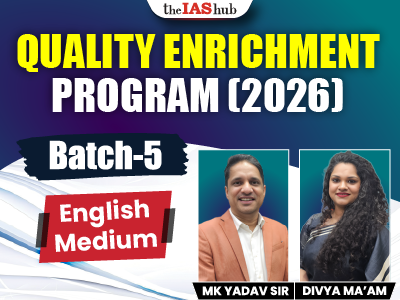Learn about the Swachh Bharat Mission, its objectives, urban and rural initiatives, and the latest updates like Swachh Survekshan 2024 and ODF+ & ODF++. Discover how India is striving for a cleaner future.

Swachh Bharat Mission, also known as Swachh Bharat Abhiyan (Clean India Campaign), is a nationwide initiative launched by the Government of India. It aims to clean streets, roads, and public infrastructure across 4,041 statutory towns.
The campaign was inaugurated on October 2, 2014, at Rajghat in New Delhi, where Prime Minister Narendra Modi took part by sweeping a road with a broom. As the largest cleanliness drive ever conducted in India, it saw participation from around 3 million government employees, as well as students from schools and colleges.
The mission follows a unique chain nomination model, where each of the nine personalities initially chosen by Narendra Modi was encouraged to nominate nine more individuals, creating a continuous cycle of involvement. Over time, the campaign has attracted people from various fields, gaining widespread support and participation.
Over the years, the mission has expanded with Swachh Bharat Mission 2.0, focusing on sustainability and better infrastructure.
Also Read: UPSC Exam Syllabus
The Swachh Bharat Mission (SBM) was initiated in 2014 with the goal of making India open defecation free (ODF) within five years. This effort aligned with Sustainable Development Goal 6.2, which focuses on ensuring safe and equal access to sanitation for everyone, particularly women and girls.
By emphasizing community involvement, the campaign led to the construction of over 100 million household toilets by 2019, positively impacting around 500 million people in 630,000 villages. The success of SBM has inspired similar initiatives in other countries, including Nigeria, Indonesia, and Ethiopia, and has shaped the design of national campaigns.
Since 2020, the mission has entered its second phase, with a focus on sustaining and expanding sanitation efforts across the entire cycle.
The mission had two key components:
By 2019, the government declared India ODF, meaning toilets were built for all households. However, the work didn’t stop there. Swachh Bharat Mission 2.0 was introduced to ensure long-term cleanliness and better waste management.
The question Swachh Bharat Mission under which ministry is often asked and answer to it iss that Swachh Bharat Mission (Gramin) is a sanitation programme implemented by the Ministry of Drinking Water and Sanitation (now Ministry of Jal Shakti).
The urban component of the mission – Swachh Bharat Mission (Urban) is being driven by the Ministry of Housing & Urban Affairs (MoHUA), and has the following broad objectives: All statutory towns in Urban India to become Open Defecation Free (ODF)
Also Read: UPSC PYQs
The Swachh Bharat Mission Gramin targeted rural sanitation. Before 2014, many villages lacked toilets, forcing people to defecate in the open. This led to health risks like diarrhea and infections.
Key Achievements:
With Swachh Bharat Mission 2.0, the focus shifted to sustainability. The new phase ensures:
Cities face different challenges—garbage collection, plastic waste, and sewage treatment. The Swachh Bharat Mission Urban worked on:
Key Programs Under SBM Urban:
Swachh Bharat Mission has clear Objectives:
By 2019, India was declared ODF, but the next challenge was maintaining cleanliness. This led to ODF+ and ODF++ standards.
Also Read: Books for UPSC Mains
After achieving ODF (Open Defecation Free), the government introduced higher standards:
These standards ensure that India doesn’t just build toilets but also keeps them clean and sustainable.
Swachh Survekshan is India’s annual cleanliness survey. It ranks cities and states based on:
Swachh Survekshan 2024 will continue this tradition, encouraging cities to compete for the cleanest city title. Past winners include Indore, Surat, and Navi Mumbai.
Also Read: Constitutional bodies in India
1) Financial Support and Local Ownership:
2) Social and Behavior Change Initiatives:
3) Sanitation as a Shared Responsibility:
4) Over 600,000 community volunteers, called swachhgrahis, were mobilized.
Also Read: Cooperative Federalism in India
The first phase of Swachh Bharat Mission was about building infrastructure. Now, Swachh Bharat Mission 2.0 focuses on:
The mission is no longer just about toilets—it’s about sustainable cleanliness.
Also Read: Cooperative Federalism in India
The Swachh Bharat Mission has transformed India’s sanitation landscape. From making India ODF to pushing for ODF+ and ODF++, the mission keeps evolving. With Swachh Survekshan 2024 driving competition and Swachh Bharat Mission 2.0 ensuring sustainability, India is moving closer to a cleaner, healthier future.
Every citizen’s participation is crucial. By keeping our surroundings clean, we contribute to a Swachh Bharat.
Are you preparing for UPPCS Mains 2024? Join IAShub’s UPPCS coaching batches to boost your preparation. Enroll now!
Are you preparing for UPSC 2025? Join IAShub’s UPSC coaching batches to boost your preparation. Enroll now!
The primary objectives include eradicating open defecation, promoting solid waste management, encouraging behavioral changes, and ensuring sustainable sanitation infrastructure.
Swachh Bharat Mission 2.0 is the second phase of SBM, focusing on waste management, legacy waste remediation, and maintaining Open Defecation Free (ODF) status through ODF+ and ODF++ standards.
Swachh Survekshan 2024 is an annual cleanliness survey that ranks cities based on sanitation performance, citizen feedback, and waste management practices.
ODF+ ensures clean, functional public toilets with regular maintenance, while ODF++ further emphasizes effective faecal sludge and sewage management.


Refine your answer writing skills and elevate your UPSC preparation with personalized support and expert feedback.
Fill out the form to get started with the program or any other enquiries !








Are you dreaming of becoming an IAS officer? Then, IAShub can be your best guide. It is one of the Best IAS Coaching in Delhi. Many students who want to clear the UPSC exam join IAShub for learning. The institute gives both online and offline classes. Their teachers are experienced and helpful. They easily explain every topic. Students also get notes, tests, and tips to do well in the exam.
IAShub is in Delhi and is trusted by many UPSC students. It offers coaching for every part of the UPSC exam – Prelims, Mains, and Interview. The classes are simple and easy to understand. The teachers are experts and guide students in the right way. IAShub is also known for its helpful notes, test series, and answer-writing practice. IAShub is the best coaching in Delhi and also gives UPSC Online Classes. This helps students from any place in India to learn. The online classes are live and also recorded. So, students can watch them anytime. These classes cover the full UPSC syllabus.
Here are some important services provided by IAShub:
The UPSC Civil Services Exam has three parts:
This exam is tough, but with the right guidance, it becomes easy to manage. Students must study smart and stay regular.
IAShub supports students from the beginning to the end. It gives the right books, tests, and notes. The classes are easy to follow, and the teachers are always ready to help. Students get personal doubt sessions too. The test series and answer checking help students learn where they need to do better. Also, free study materials save time and money.
IAShub also guides students during the final stage – the interview. Experts take mock interviews and give useful tips. This full support makes IAShub one of the best IAS coaching in Delhi.
